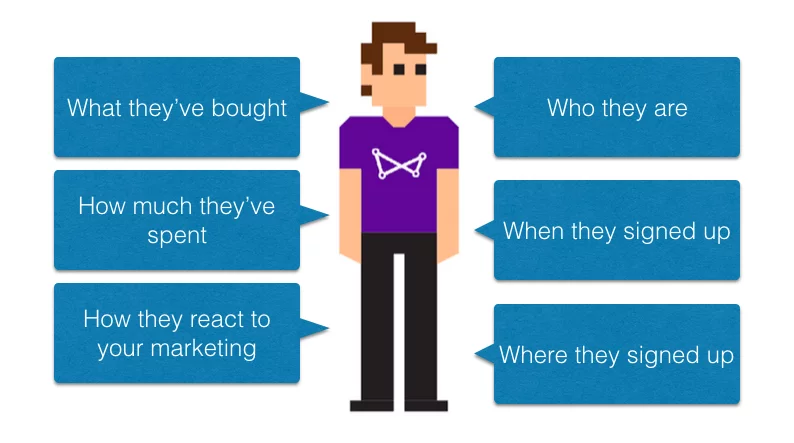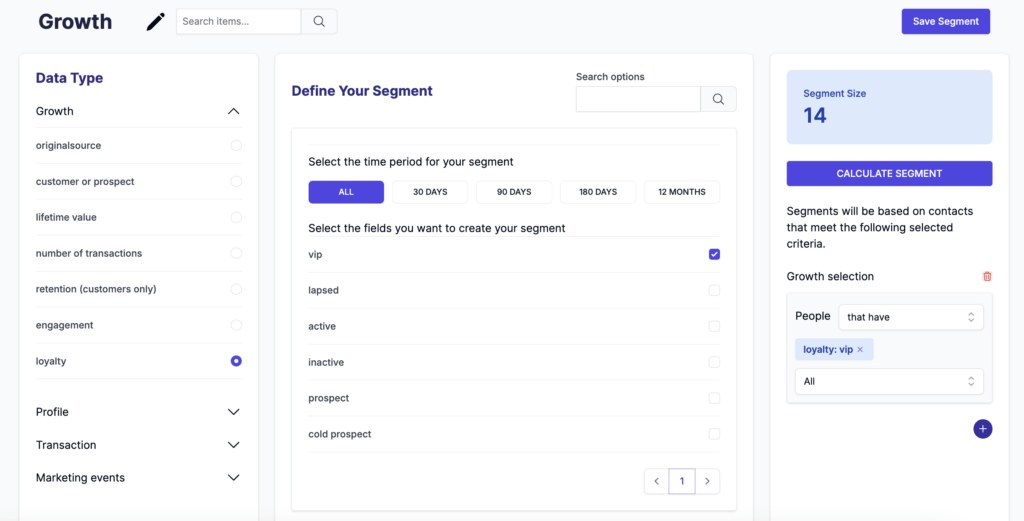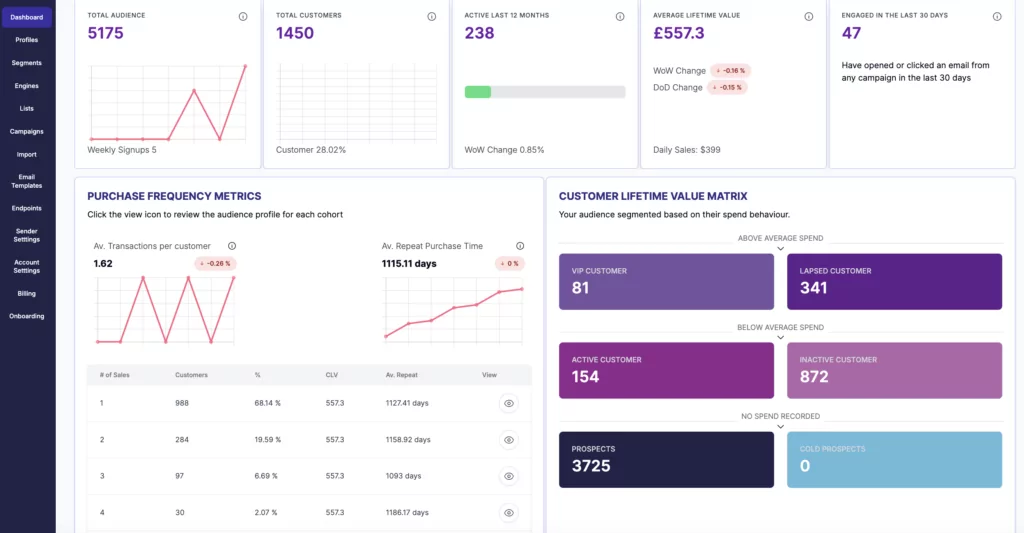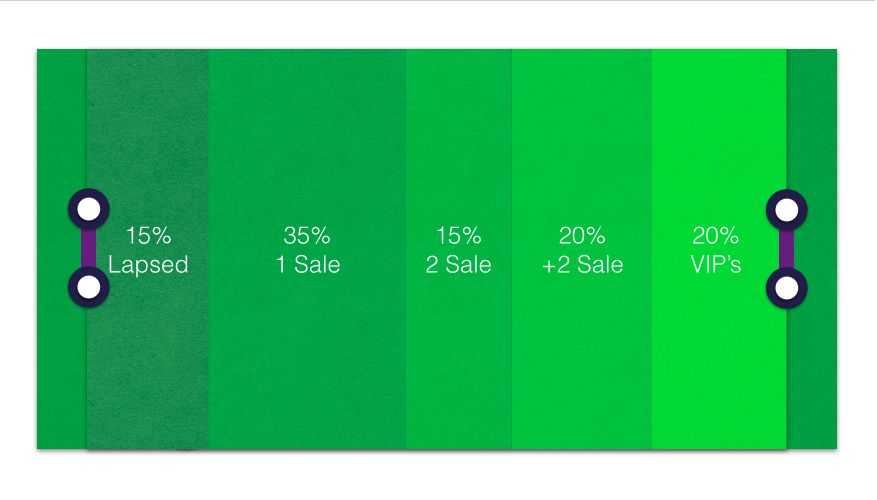Identifying your customer groups
During the Rugby World Cup, our city (Newcastle) was full of fans from all over the world. People from New Zealand, Samoa, South Africa, Tonga and even as far away as Scotland 🙂
They have been pretty easy to identify.
Imagine if all the different customer groups you have in your business were that easy to identify?
Well they can be…
You are marketing to people
Whether you are marketing to a B2B or a B2C audience you are marketing to people. Real life individuals with different tastes, likes and dislikes. The big challenge is defining who those people are and how you can reach them.
When you do, you’ll get success.
If you can easily identify your customers, it’s easier to communicate to them with relevance.
When you communicate to your customers with relevance, you build trust with your audience.
If you build trust with your audience, they are more likely to buy from you than from a competitor.
What you can learn from the business of sport
Fans of sport are committed to both their Team and the Sport that that team participates in.
They spend time, effort, and in some cases a lot of money to support their team.
They are also loyal.
The sport / team they follow usually has an emotional attachment to them. It’s related to where they are born, an extension of a family member (I used to watch them with my Father, Sister, favourite Auntie), or related to a specific childhood experience (a favourite player, a cup final, a certain goal).
It’s this emotional attachment that is one of the reasons why the ‘business’ of sport has developed so quickly over the past 20 years.
The fans are committed – emotionally and financially.
Identify your audience
Way back in 2015, The Rugby World Cup held three games in our home city of Newcastle. The city has been packed and it’s been pretty easy to spot the ‘customers’ of the Rugby World Cup.
We’ve had supporters of New Zealand, Scotland, South Africa, Samoa and Tonga. Each ‘group’ of supporters were easy to identify, and wanted to you know who they were supporting.
The New Zealanders were all decked out in ‘All Black’ kit.
The Scottish were in kilts, wrapped in flags or wearing blue Rugby jerseys.
The South Africans were in their traditional green ‘Springbok’ jerseys or like the Scottish wrapped in a flag.
Tonga and Samoa are both small South Pacific Islands so the supporters of those teams weren’t that easy to spot. Let’s consider them as the ‘niche’ audiences in this example.
If you put all the fans of those five teams in a stadium, you’d be able to identify at least 80% of the supporters based on what they are wearing.
Creating a plan to identify your customers
If you had all of your customers in one place – your stadium. How would you look to identify them?
Would it be based on what they’ve bought?

Perhaps you would create customer groups based on a shared ‘profile’ or interest?
Or you could group your customers based on the amount of money that person has spent with your business?

It’s worth noting that creating customer groups can get complicated pretty quickly, so it’s best to keep it simple to start with and organise your customers based down into groups based on their value (if you signup with Websand, we’ll do it for you – see Websand screenshot above).
The example below (from Websand) suggests how your business could look if you identified your customers based on the number of sales over the last year.

Market to each of your customer groups with relevance
Once you’ve identified an audience, you can market to them with relevance.
Back to the stadium.
Now we’ve identified everyone in the stadium, what can we market to them?
Let’s assume we have some fantastic Rugby fan merchandise to sell – stuff that would only appeal to true fans of Rugby.
We’ve got generic Rugby World Cup merchandise, we’ve got New Zealand merchandise and we’ve got Scottish merchandise.
Rather than sell everything to everyone, we’d suggest a more strategic approach.
The first thing to say is we are in a Rugby stadium, so we are in the right place. As we are selling to Rugby fans, then should be able to say something of relevance to everyone in the stadium.
However, we’d be better to you’d focus your efforts on those wearing Rugby jerseys as that suggests that they are ‘Rugby’ fans rather than passive ‘spectators’ who have visited the stadium as it’s an ‘event’
For the New Zealand merchandise, then you’d focus your effort on talking to people that had identified themselves as New Zealand fans. The New Zealand audience.
Similarly, for the Scottish merchandise, you’d focus you efforts on talking with those in Scottish kit/kilt/face-paint. The Scottish audience.
We haven’t got ‘specific’ merchandise for those fans of South Africa, Somoa or Tonga. That’s OK. But remember, they are fan’s of Rugby so you can market the generic Rugby merchandise to them.
Marketing to your customers with relevance
Back to your stadium, which is full of your customers.
We’ve identified those customers that are your VIP’s, those customers who have ‘lapsed’ and those customers who have bought once, twice or more than twice respectively.

Based on the identification of each audience, you can create a marketing plan to communicate to them with relevance.
The message you send to a VIP will be a very different message to a customer that hasn’t bought from you for a while.
Remember…
If you can easily identify your customers into easy-to-understand customer groups, it’s easier to market to them with relevance.
When you market to your customers with relevance, you build trust with your audience.
If you build trust with your audience, they are more likely to buy from you than from a competitor.
Get those right and you’ll get success, and getting it right starts with a little bit of planning.
Join the team. Sign up and put the plan into action
We make the difficult task of segmentation easy, sign up here to get started or book a call on our calendar. We can’t wait to get you started and unlock the missed opportunity from your customer data.
